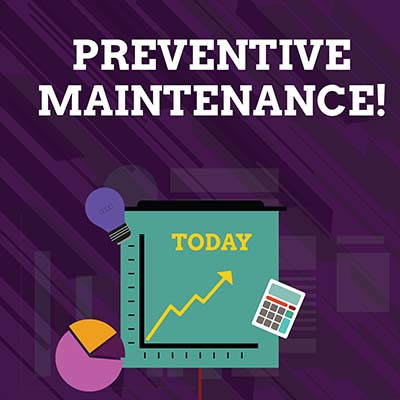How important do you consider security for your personal and private data on your web-connected accounts? If you don’t think about it often, you should be; countless entities out there—including major enterprises and providers you trust—do not respect your data privacy and security. Let’s discuss how some large companies take advantage of your data and some of the questions you should consider when trusting these companies with your data.
Video conferencing has really taken off in recent years, due in no small part to the COVID-19 pandemic, which forced remote work on most businesses worldwide. However, businesses see the benefits of video conferencing, and it has now cemented itself as a go-to communications solution for all businesses. Today, we want to discuss how to make virtual meetings and video conferencing more productive and more engaging.
Through cloud-based technology, your business can change the way it operates in countless different ways, all of which can benefit you in the long run. If you haven’t yet considered cloud-based solutions for infrastructure, then you could be missing out on some of the greatest innovations of the past decade. Here are some ways your business can start to leverage the cloud to its advantage.
Technology plays a pivotal role in the operations of most businesses, but its primary function is to empower and support the workforce. Many employees have specific expectations when it comes to the technology provided by their organizations. Failure to meet these expectations can drive them to seek employment elsewhere. Let’s delve into five ways technology bolsters your employees' productivity.
Sure, retailers have to manage their inventory effectively, but have you ever thought about the way your own business manages what it keeps on hand? Today we want to discuss five ways your business can more effectively manage inventory—and it turns out technology plays a pretty significant part in improving any inventory control system.
Businesses need to be cognizant of the role technology plays in today’s operations. Not only do you stand to lose ground on your competition if you fail to properly invest in your technology, it can have other negative effects on your business as well. This week, we outline eight things that can go wrong if you aren’t constantly looking to build a technologically savvy business.
With technology serving such an indispensable role in modern business the looming threat of disaster is one that needs to be considered. With so many consequences on the line, it’s important that your business is prepared to deal with these disasters effectively and efficiently. Let’s run through some tips for properly preparing for your potential disaster recovery needs.
One way businesses attempt to save money is through automating certain processes and tasks that have traditionally been time-consuming or monotonous for their workforce. When implemented appropriately, automation can cut costs, streamline operations, and improve quality of life for workers. However, just because a task can be automated doesn’t necessarily mean that it should be automated. Let’s look at the arguments for and against automation in these contexts.
When your technology gets older it has a tendency to get less effective. This can be a major roadblock to organizational productivity, and have devastating effects on your business. These include major downtime events and overwhelming inefficiency. Let’s take a look at some ways that you know that it’s time to focus on reinvestment.
Back in 1995, the Association of Records Managers and Administrators were in the midst of campaigning for the renewal of the Paperwork Reduction Act. As a part of their efforts, they created National Records and Information Management Day. Over the years since, it has expanded into a week, and then into an entire month, for businesses around the world to consider their record-keeping practices.
Technology fatigue is the mental grinding that comes with the overwhelming use of technology in our lives. Many people in the workforce haven’t had to use technology as much as they do today and the ever-growing demand for technology in business creates problems for employees (and therefore businesses). This week, we thought we’d discuss the truth behind technology fatigue and how individuals can do a better job of not getting burnt out from tech.
Ah, the business telephone solution. You know you need it, but you dislike working with your current telephone provider for a number of reasons. You know you can get a better deal if you look around, but we bet that the best deal around is a hosted Voice over Internet Protocol solution from Techworks Consulting, Inc.. How can our VoIP solution save your business time, energy, and resources?
Every business depends on productivity, but there are many different forms that productivity can take. The types that every business prefers are the actions that result in improved revenue generation. That’s not to say that all work that is done for your business isn’t important, but the more that can be done to make money, the better off your business will be. Let’s take a look at three ways your business can shift the way they do things with the use of technology.
Have you ever wondered why it sometimes takes longer than you might expect for certain tasks to be accomplished with your business’ network? It turns out that technology is far from a simple thing, and small issues can seriously derail productivity and efficiency of complex information systems, one of which is the notorious network bottleneck. How can you identify and rectify this issue for your network?
If you want to minimize costs, being proactive can go a long way toward this goal. Your business’ technology is one such area where proactive maintenance can allow your company to save countless dollars and hours of downtime. If you haven’t implemented a proactive maintenance platform yet, then you might be putting your company at risk.
Every business wants to make smart technology decisions. For the small business looking to get their workforce the affordable workstations one option that you have today is utilizing the budget Chromebooks that are available. Today we will discuss what the Chromebook can bring to your business and how it can help you reduce your hardware costs and get your staff the resources they need to be productive.
Technology enables some amazing things for businesses, but it can influence the way you both look at operations and the way your business functions. Not all businesses have the capital to make these large technology investments. You are far from optionless, though; today we want to discuss some of the better investments you can make in your technology infrastructure, in particular ones that won’t drain your budget.
If you aren’t versed in business technology, finding the right solutions can be challenging to say the least. Technology should make your life easier, not more difficult. With so many options at your fingertips, we thought it would be helpful to share a couple of tips to help you get started with deploying the right technology solutions for your organization. Here are three tips to help you make the best, most educated decisions about the technology for your business.
A lot of people like to venture predictions about what the future will bring for business, and many of those predictions are based on anecdotes and hopes. When it comes to information system management and the future of IT for business, there are a lot of claims made by companies looking to take advantage of the reliance on IT and present business owners’ and decision makers’ options on how to leverage this technology for their own good. Today, we thought we would take a look at three emerging technologies that we will all come to use in the future and whether they are right for your business now.
Cloud computing has been a hot topic in IT circles for a few years. First because of the skepticism that many IT professionals had for the practice, and now that it is a mainstream business technology, ways to boost security to protect the organization who has embraced this computing strategy. We’re here to tell you that while cloud computing is convenient, flexible, and seemingly affordable, there are instances where having physical machines makes more sense for a business.





















